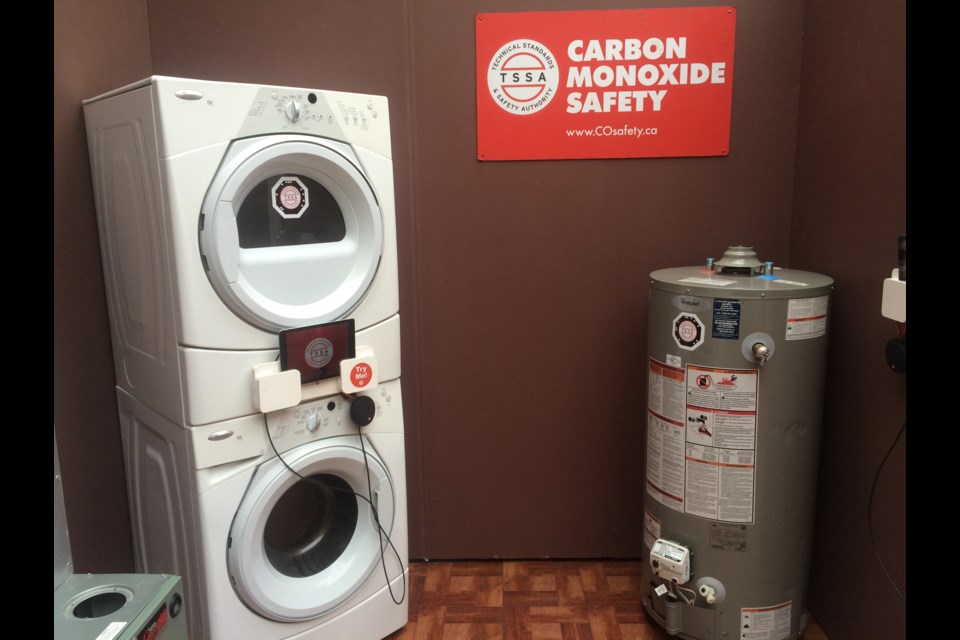If a known killer was in your home, wouldn’t you do everything you could to protect your family?
Yet many homes still don’t have a CO alarm to protect against becoming seriously ill or in extreme cases, dying from carbon monoxide poisoning.
Known as the “silent killer” carbon monoxide is an odourless, tasteless and invisible gas.
“We get between 200 to 300 calls a year in North Bay, and of those calls about 80 percent of them are false, meaning the battery just needed to be replaced, or the alarm was out of date or something along those lines,” said Deputy Fire Chief Michael Bechard.
That means that 20 per cent of the time, something more serious is happening.
“You could feel symptoms much like the flu, nausea, headache, dizziness, fatigue because that is how carbon monoxide interacts with the hemoglobin in your blood stream. If you are sleeping, you wouldn’t even know it,” said Bechard.
This is Carbon Monoxide Awareness Week. Experts say it is essential that inspections and maintenance of fuel-burning appliances and CO alarms be done on an annual basis.
“The backup is your alarm. The first thing is taking responsibility and doing annual maintenance on your appliance. As a Deputy Fire Chief, I’m telling you, that’s going to protect you.”
North Bay Fire and Emergency Services, together with the Technical Standards and Safety Authority (TSSA), and the Office of the Fire Marshall and Emergency Management (OFMEM) used a TSSA Carbon Monoxide Safety Home to inform the public about the hidden dangers.
The North Bay Fire Department explains that CO “Is produced when fuels such as natural gas, propane, wood, heating oil or gasoline do not burn properly in fuel-burning appliances such as furnaces, gas or wood fireplaces, hot water heaters, gas or wood stoves, propane fuel burning heaters and generators or vehicles“
If your home has a fuel-burning appliance or an attached garage, you must have a working CO alarm adjacent to each sleeping area.
“A lot of times people don’t pay attention to their appliances until they break. So it is important to make them aware that dryers, furnaces, water heaters, all the equipment that is being used on a daily basis are potential sources. We want people to think about whether they have working alarms, and if their equipment has been maintained,” said Michael Madigan field safety inspector with TSSA.
A TSSA-certified fuel technician is trained to inspect appliances, able to detect the smallest of cracks hidden inside.
“A TSSA registered contractor is available for annual maintenance. A lot of the equipment requires annual maintenance,” said Madigan.
It is not just about homes and attached garages, it also includes places like hunt camps and cottages, making sure the appliances there are in good working order and a working CO alarm is in place.
“You might not go out very often, so chances are your batteries might be dead. So think ahead before you leave the house, bring some batteries, and check the alarm,” said Madigan.
Having a working CO alarm doesn’t just make sense, it is the law.
“It is a $360 fine per alarm that is malfunctioning. What that tells you is the province went from a $230 fine to a $360 fine, because what we’re seeing is people aren’t taking it seriously,” said North Bay’s deputy fire chief.
He also points out that alarms have a shelf life, so check the expiry date and read the manufacturers instructions.
“A lot of appliances will have very specific beeping codes like two beeps mean one thing, three beeps something else. Go back to the manufacturer's instructions, and it will actually explain to you what’s going on,” said Bechard.
Lefty Conrad isn’t leaving the safety of his family to chance.
“We have three carbon monoxide detectors on three levels of our home. We also have our gas fireplaces inspected every year by a certified inspector,” said Conrad.
“Get it done as quickly as possible. Clearly, the effects can be devastating if you don’t.”
Nipissing MPP and Minister of Finance Vic Fedeli says North Bay was the first municipality in the province to pass a by-law pertaining to CO alarms.
It came after learning of the tragic deaths of OPP Constable Laurie Hawkins (Gignac), her husband Richard, and their two children Cassandra and Jordan, in December 2008, due to carbon monoxide poisoning in their Woodstock home.
A blocked chimney vent forced CO from their gas fireplace back into their home.
“The Hawkins and Gignac families are North Bay and Nipissing riding people. Immediately our council rallied, and within weeks put together Ontario’s first carbon monoxide law and passed a law in North Bay where you must have a carbon monoxide detector in your home,” said Fedeli, who was serving as mayor at the time.
“Years later as an MPP in the legislature of Toronto, we supported MPP Ernie Hardeman from the Woodstock area, his private member’s bill called the Hawkins-Gignac Act that made CO detectors mandatory throughout all of Ontario.”
Fedeli says he and his wife Patty have donated hundreds of CO alarms throughout the riding over the years, including to area food banks.
“It is sad that some families still don’t protect their loved ones with a carbon monoxide detector. They’re relatively inexpensive, and if you really need one badly, our office in North Bay keeps CO detectors on hand to give out.“



